As early as 1972, sports manhwa genre appeared in works by artists such as Jang Hun and Choi Kyung-Tan. These artists created quality narratives and realistic situations marked by thorough sports knowledge. After the turn of the decade, manhwa became increasingly influenced by cinematic realism offered by movies, and geukhwache (극화체), or realistically rendered drawing style, became dominant while heehwache (휘화체), or caricatural or cartoon-like style, receded to oblivion. Whereas heehwache comics appealed to an abstract sense of humour and comedy, geukhwache appealed visually. Lee Hyun-Se’s 1983 sports manhwa The Alien Baseball Team of Terror 공포의 외인구단 (please note: this title is a very rough and literal translation of the original title!) heralded this drastic development of cinematic realism while introducing a new kind of hero found in manhwa.
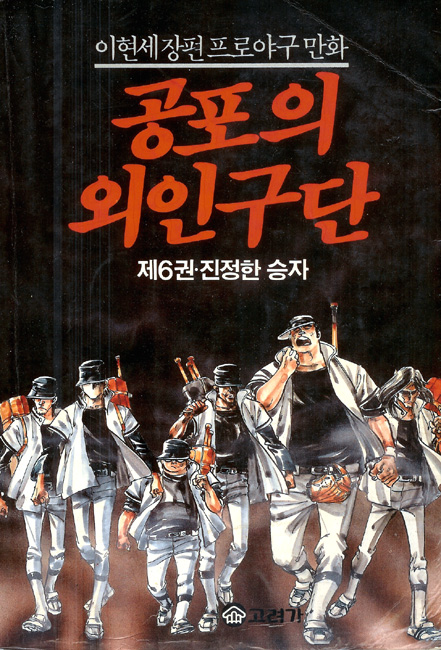
On October 26, 1979, the third president of South Korea, Park Chung-Hee, was assassinated, and Park’s military right man Chun Doo-Hwan took over the government in a coup on December 12, 1979. Korean citizens saw a brief glimmer of hope as Park’s strict rule marked with conservative nationalism came to an unexpected end. However, hope was lost at Chun’s seizure of power months later. Chun loosened certain policies in the cultural and social sphere to appease the unhappy citizens, such as in the abolition of yagantonghaegumji (야간통해금지), or the midnight curfew, abolition of public school uniforms, as well as simplification of national university exams.
However, Chun’s government proved itself as mercilessly authoritarian in the Gwangju Uprising of 1980. From May 18 to 27, Koreans protesting in the the capital of south province of Jeolla were fired upon and beaten in an unprecedented attack by government troops, leading to hundreds of civil deaths. Consequently, the nation abhorred the savage military tyranny and the stifling living conditions it enforced. Park In-Ha and Kim Nak-Ho argue that manhwa readers began to look for in manhwa the cynicism they felt, and that they turned to manhwa that featured self-abusive heroes who were met with overly simplistic conclusions such as unrealistic victory or dramatic death. Milder previous manhwa icons such as Lee Sang-Mu’s Dok Go-Tak, the young male high school athlete who overcomes hardships, or Park Du-Dong’s Go In-Dol, a laid-back philosophical caveman, no longer comforted Korean people.
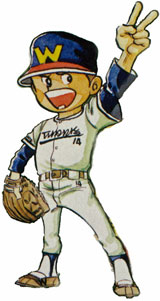
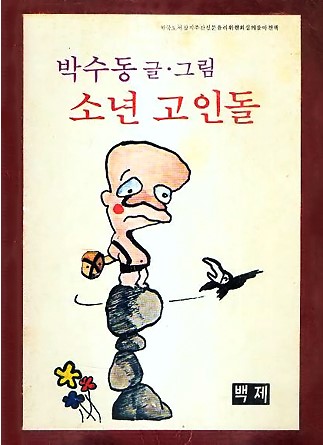
The Alien Baseball Team of Horror depicted the socially marginalized character, high school student Oh Hye-Sung*. Nicknamed Kkachi* because of his hairstyle, he is looked upon with disdain because he is fatherless, is passionate about baseball and devoted to his female romantic interest Umji.
A hero of the depressed people, according to social critic Wi Gi-Chul, Oh Hye-Sung responds to his harsh reality by fostering an obsession with victory in competition, acquiring material wealth, and revenging vain, frivolous, “gold-digging” female figures who seek out males solely for their wealth. Originally a pitcher, Oh Hye-Sung becomes injured and undergoes serious training to be resurrected as a batter.
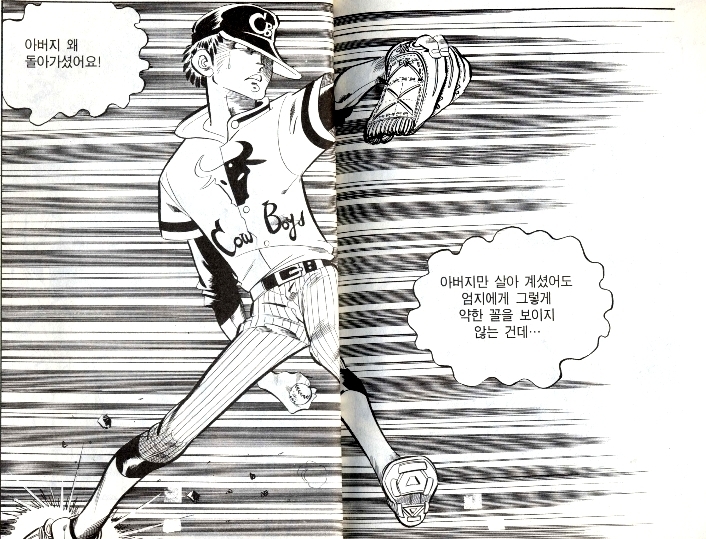
Despite the cinematic realism the manhwa employs, the narrative itself is an unrealistic portrayal compared to real-life baseball: the manhwa depicts hellish, even horrific, training in order to supposedly produce the greatest baseball player. The manhwa seemed to rekindle a ferocious hope among the young public: however, Wi, a left-of-centre critic, reads in the narrative an individualistic rather than collective way to bring about social change, and asserts that the narrative does not enforce the ideal.
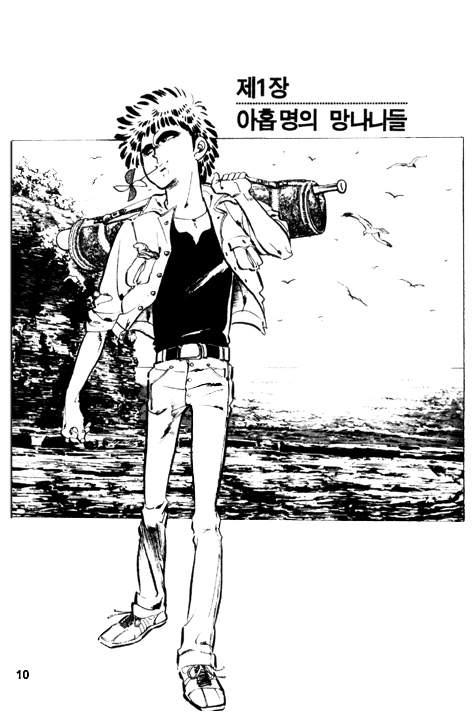
Nevertheless, according to Park In-Ha and Kim Nak-Ho, the manhwa impacted Korean cartoon history as Lee put in tangible form a core value of capitalistic mainstream culture. Oh Hye-Sung, who was not born with innate physical strength, as with previous heros, was constructed as a new hero archetype who re-challenged endlessly despite failures. The surprising success of Baseball Team of Terror led to a booming trend in the marginalized, strong-willed protagonist placed in elaborate plot structure, and an emphasis on visual spectacle. Sports manhwa of this ilk, along with new soonjung manhwa of the 1980s, further increased the age of the average manhwa consumer.
Compiled from:
Choi, Yeol. The history of Korean cartoons 한국만화의 역사. Seoul: Yeolhwadang, 1995. ISBN 8930126030
Park In-Ha, and Kim Nak-Ho. Han’guk hyŏndae manhwasa, 1945-2010 한국 현대 만화사, 1945-2010. Seoul: Tubo CMC, 2012. ISBN 9788996503064
Sohn, Sang-ik. Hanʼguk manhwa tʻongsa (1945 to present) 한국 만화 통사 : 문화사적 관점 에서 본 한국 만화 의 역사 와 이론 : 선사 시대 부터 1945년 까지. Seoul: Sigongsa, 1998. ISBN 8972598739
*Glossary
hyesung 혜성: literally translates to “comet”
kkachi 까치: literally translates to “magpie”